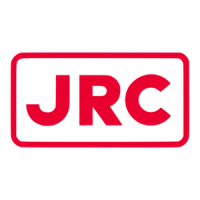ooaaaaooaoaaaaaaaaoaoaoooooooooaoaaaaoa
The radar operator has
a role
of interpreting the radar displays
to
provide
his
best
aid
in
maneuvering
the ship.
For this
purpose,
the
operator
has to observe
the radar
displays
after fully
understanding
the
advantiages
and
disadvantrages
that the
radar
has. For
better
interpretation
of
radar
displays,
it is important to
gain
more
experiences
by operating
the radar
equipment
in fair
weathers and comparing
the target
ships watched with the naked
eyes and their
echoes
on the
radar
display.
The radar
is mainly used
to monitor
the
courses of own
ship
and
other
ships
in open
seas,
to
check
buoys and other
nautical
marks when
entering a
port,
to measure own ship's
position
in the
coastal
waters relative to the bearings and
ranges
of the
shore
or islands
using
a chart, and to
monitor
the
position
and
movement
of a heavy rain if it
appears
on
lhe radar display.
Various
types of radar
display
will be explained below.
Radar Wave
with
the
Horizon'
'
Radar
beam
radiation
has
the nature of
propagating
nearly
along
the curved surface
of the
earth.
The
propagation
varies
with the
property
of the air
layer through
which
the
radar
beam
propagates.
In
the
normal
propagation,
the distance
(D)
of
the radar
wave
to the
horizon is
approximately
10%
longer than the distance
to the
optical horizon. The distance
(D)
is
given
by
the
following
formula:
h1 :
h2:
D=z.n(Jfr
+J[zX"-l
Height
(m)
of
radar scanner above sea level
Height
(m)
of a target
above sea level
Fig. 6.1
is a diagram for
determining
the maximum detection
range
of a target
that
is
limited
by the
curve of
the earth surface
in the normal
propagalion.
6-1

